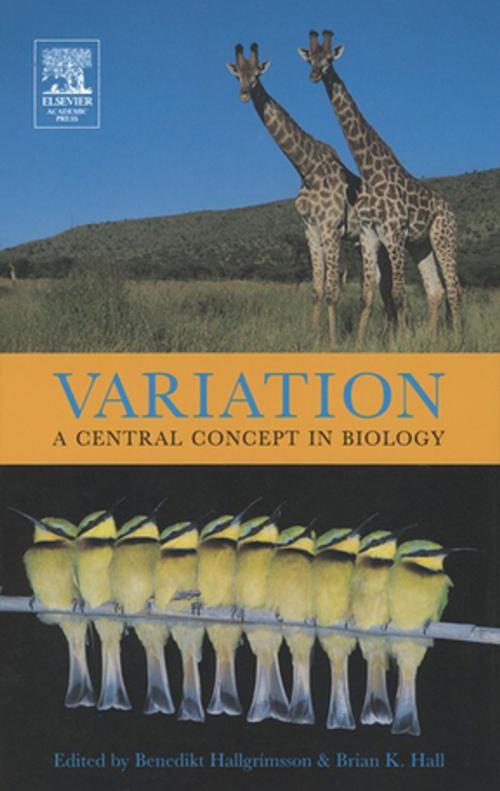Variation
A Central Concept in Biology
Nonfiction, Science & Nature, Science, Biological Sciences, Ecology| Author: | ISBN: | 9780080454467 | |
| Publisher: | Elsevier Science | Publication: | May 4, 2011 |
| Imprint: | Academic Press | Language: | English |
| Author: | |
| ISBN: | 9780080454467 |
| Publisher: | Elsevier Science |
| Publication: | May 4, 2011 |
| Imprint: | Academic Press |
| Language: | English |
Darwin's theory of evolution by natural selection was based on the observation that there is variation between individuals within the same species. This fundamental observation is a central concept in evolutionary biology. However, variation is only rarely treated directly. It has remained peripheral to the study of mechanisms of evolutionary change. The explosion of knowledge in genetics, developmental biology, and the ongoing synthesis of evolutionary and developmental biology has made it possible for us to study the factors that limit, enhance, or structure variation at the level of an animals' physical appearance and behavior. Knowledge of the significance of variability is crucial to this emerging synthesis. Variation situates the role of variability within this broad framework, bringing variation back to the center of the evolutionary stage.
- Provides an overview of current thinking on variation in evolutionary biology, functional morphology, and evolutionary developmental biology
- Written by a team of leading scholars specializing on the study of variation
- Reviews of statistical analysis of variation by leading authorities
- Key chapters focus on the role of the study of phenotypic variation for evolutionary, developmental, and post-genomic biology
Darwin's theory of evolution by natural selection was based on the observation that there is variation between individuals within the same species. This fundamental observation is a central concept in evolutionary biology. However, variation is only rarely treated directly. It has remained peripheral to the study of mechanisms of evolutionary change. The explosion of knowledge in genetics, developmental biology, and the ongoing synthesis of evolutionary and developmental biology has made it possible for us to study the factors that limit, enhance, or structure variation at the level of an animals' physical appearance and behavior. Knowledge of the significance of variability is crucial to this emerging synthesis. Variation situates the role of variability within this broad framework, bringing variation back to the center of the evolutionary stage.
- Provides an overview of current thinking on variation in evolutionary biology, functional morphology, and evolutionary developmental biology
- Written by a team of leading scholars specializing on the study of variation
- Reviews of statistical analysis of variation by leading authorities
- Key chapters focus on the role of the study of phenotypic variation for evolutionary, developmental, and post-genomic biology















